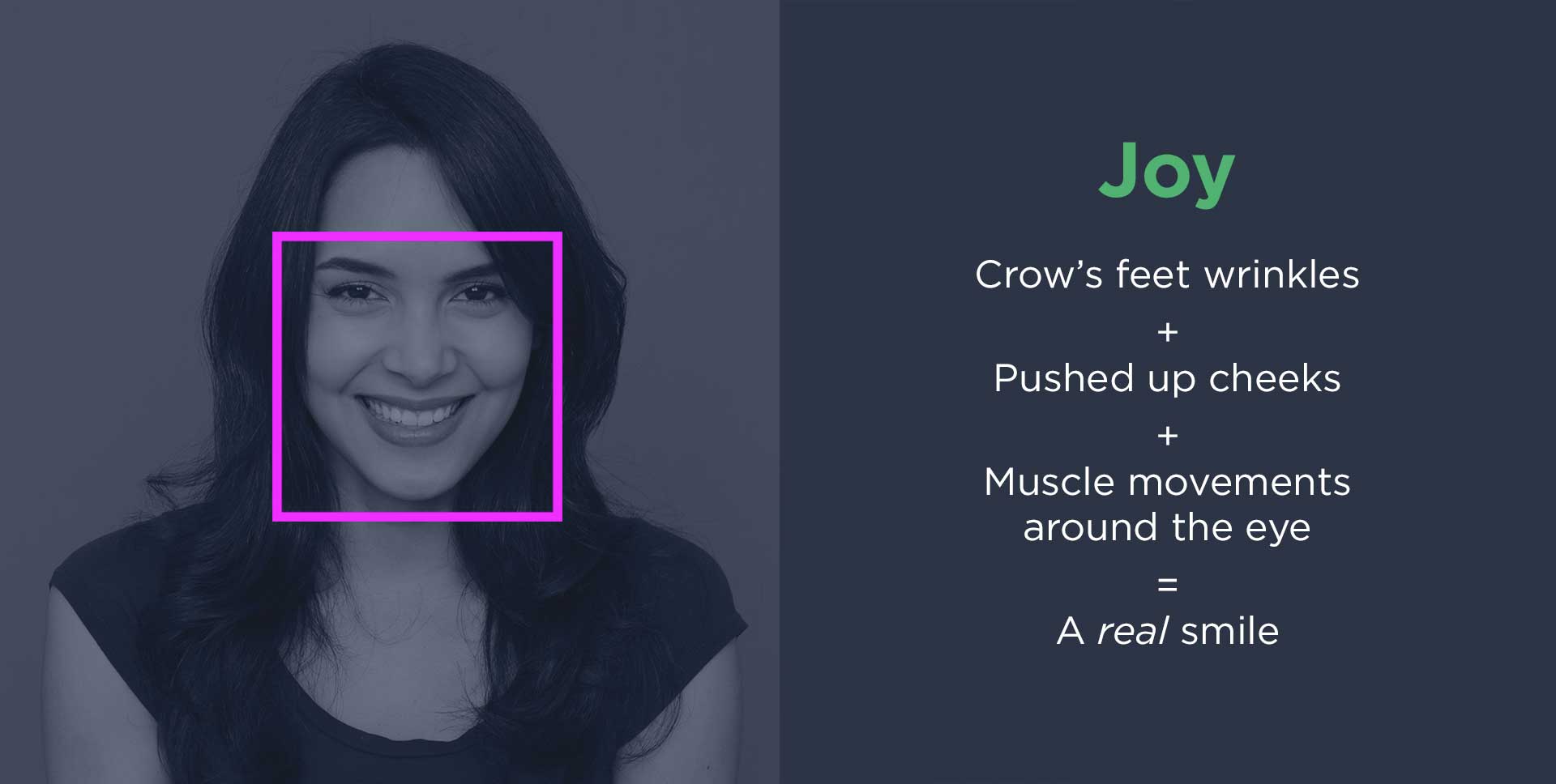
Imagine you are watching a political debate where Candidate A is passionately going on about a topic and Candidate B is listening attentively. The camera zooms in on Candidate A whose eyes are wide open and hands are gesticulating. As the camera pans to candidate B you see it, a smirk, and a quick eyebrow raise. It only takes a fraction of a section but through this small group of facial movements you have learned that Candidate B does not agree with Candidate A. Candidate B didn’t have to say a word, the distaste was shown through a micro expression, which will gain or lose voters’ sway just like that.
What is a micro expression?
As you read that question you may have squinted your eyes, raised your brow, or pursed your lips. Those small twitches in your face that you make subconsciously are micro expressions.
In Paul Ekman’s words:
“Micro expressions are very brief facial expressions, lasting only a fraction of a second. They occur when a person either deliberately or unconsciously conceals a feeling. Seven emotions have universal signals: anger, fear, sadness, disgust, contempt, surprise and happiness.”
The term 'micro expressions' comes from research scientists Haggard and Isaacs, in 1966, while they watched films of people in couples therapy. Both noted quick behaviors flashing on people’s faces and slowed the film down to better see these expressions. From there micro expressions have been discussed and studied in great detail by many psychiatrists.
What do micro expressions tell us?
Micro expressions tell us, or lead us to assume, how someone is truly feeling in the moment. Examples of these emotions may be:
- Stress
- Frustration
- Anxiety
- Comfort Level
- Disagreement
Micro expressions DO NOT tell us when:
- Someone is lying
- Someone is guilty
- Someone doesn’t believe you
Micro expressions in the real world
Understanding micro expressions has increasingly gained importance in certain career fields and has become a subject that can be studied in school or through online programs.
Jobs that require interacting with others and understanding people’s emotional state tend to require some knowledge of micro expressions. These careers include police, government military, detectives, psychologists, therapists, and even sometimes actors. All of these positions require some understanding of social behaviors and emotional states so that in specific situations they can better understand the individuals in the moment.
These careers have seen a boom in popularity since more and more crime related TV shows use “emotional/microexpression” agents to determine if someone is lying or not and relies heavily on their findings to solve the crime. However, like most things on TV, this perception of what these agents do is very off.
Joe Navarro, former Federal Bureau of Investigation agent and supervisor as well as author, has confirmed this:
“...there is no single behavior indicative of deception. There are indicators of stress, psychological discomfort, anxiety, dislike, issues, or tension, but not deception”
In fact Navarro argues that relying on micro expressions is not enough and that nonverbals (body queues) need to be taken into consideration as well. For example, he has put together a list of 215 nonverbal behaviors, associated only with uncomfortability, and they do not take place in the face. In the real world of crime fighting Navarro still takes micro expressions into consideration, he just pairs that information with other body and emotional indicators to get a better idea of a person’s behavior and personality.
(BTW Joe's blog over at PsychologyToday.com is excellent and well worth bookmarking)
Understanding yourself and others
When we communicate verbally or through our body motions we can lie, be misread, or miscommunicate how we feel. By understanding micro expressions we can start to learn more about how others may feel and how we feel.
The next time you are in front of a mirror say an emotion and make a face that you think means that emotion. As you do this, watch to see what additional small facial movements you may make as well. This exercise will help gain control of your emotional responses as you are linking your emotions with an experience and creating emotional triggers.
After you have recognized your own emotions with this activity you may start to see similar micro expressions within others. When you start to pick up on this, with friends, family, and/or strangers, you will be able to better understand what someone is going through. This will increase your awareness and empathy for others and most likely it will improve your relationships with others.
Reading micro expressions
Technology is advancing, quickly, to read beyond the 6 core emotions by picking up on certain facial muscle movements. By continuously studying these movements emotional analysis will increase in its accuracy.
At Kairos, micro expressions help us pinpoint back to one of the 6 core emotions. If someone says they are sad their micro expressions may read that they are angry or surprised and also, the frequency of those micro expressions paired with larger facial movements, allows us to see that emotion to a certain degree. This allows us to better understand our users and helps us show our users how they can better understand themselves. More importantly, by having more information on others emotions we can create better products for everyone to use.
Final thoughts
Now that you know what a micro expression is you may start looking for them on different faces. You will start to pick up on patterns that specific people have, you will recognize when someone on TV may feel uncomfortable, and ultimately you will start to build a clear picture on why you feel what you feel and how you are communicating it to others through your facial expressions.
So, if people are displaying certain micro expressions and emotions together what does this mean? It could mean they like your product, they feel excited by your project, or it could mean they have no interest whatsoever. The data that is collected from micro expression and emotions can be used in both strategic and tactical ways within your business.
Learn more about how to integrate face analysis into your own products and services with our developer tools. Not a developer? Not a problem, drop us a line and we'll help you bring the power of human analytics to your company.

Ben Virdee-Chapman
Ben is the CDO & Head of Product at Kairos, a Human Analytics platform that radically changes how companies understand people.